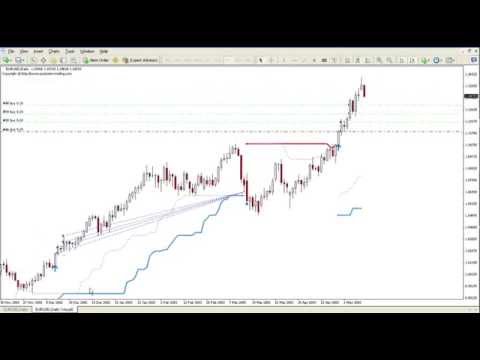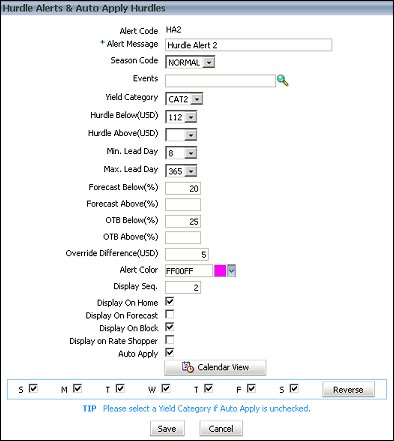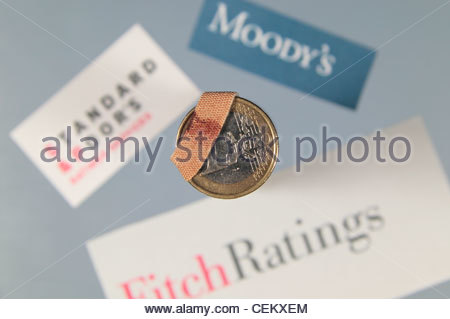Calendar Spread: What is a Calendar Spread Option?


On this page we offer more information on them and how they are created. The simple definition of a calendar spread is that it is basically an options spread that involves options contracts with different expiration dates. There are several types, including horizontal spreads and diagonal spreads. The maximum gain on a calendar spread can’t actually be worked out in advance because it’s impossible to know what the back-month option will be trading for when the front-month option expires. As far as volatility goes, these positions have a positive impact when implied volatility is increasing.
Calendar spreads have a tent shaped payoff diagram similar to what you would see for a butterfly or short straddle. The main disadvantage here is the fact that the effects of time decay can’t necessarily be forecasted with 100% accuracy, which means you can’t predict exactly how much money you might make. These two transactions should be carried out simultaneously unless you are confident enough to use legging techniques. The contracts bought will be more expensive than the ones written, because they will have more time value, but you will incur a cost for establishing the spread. As far as breakeven points, they’re a little bit harder to calculate with calendars because there’s no single way to determine them.
The problem is that the stock will not always act according to our plan. If the stock makes a significant move, the trade will start losing money. Because if the stock moves up significantly, both options will have very little time value and the spread will shrink. Ideally what you’d want to have happen in this trade is you want a stock in the short term to stay above 40, stay pretty stagnant, and then after that, you’d like it to drop.
This will double the original investment, so the alternative is to sell half of the 145 calendar and use the proceeds to buy the 147. Calendar spreads are beneficial when the underlying security is expected to have neutral to moderately rising price trends. If the stock reaches one of the break-even points, I would typically adjust by opening another calendar spread around the current price, converting it to a double calendar. The stock makes a significant move, the trade will start losing money. Because if the stock moves up to say $650, both options will have very little value and the spread will shrink. Of course $650 is a bit extreme move in one month, but you get the idea.
There are no guarantees, but you want to make sure you hedge your knowledge to be on the right side of the trade. The best options trading education available that I have ever encountered by far, and one of the best values in any education. Great instructors, a very supportive community, and a tremendous amount of information and content. Not get-rich-quick, but life changing if you are willing to put in the work.As a graduate of the program, I continue to learn and grow from everything provided by OptionsAnimal and continue to improve.
If the stock price falls sharply so that both puts are deep in the money, then the prices of both puts approach parity for a net difference of zero. The price increased due to a decrease in the short calls’ price at a faster rate than the long calls’ price. So, in this example, the short $170 call that the trader initially had 39 days to expiration lost $3.94 of value over the period, while the long $170 call with 74 days to expiration at entry lost $2.95. As a result, the spread price increased as the short option lost more value than the long option.
SHORT CALENDAR SPREAD WITH CALLS AND PUTS
Since the goal is to profit from time and volatility, the strike price should be as near as possible to the underlying asset’s price. The trade takes advantage of how near- and long-dated options act when time and volatility change. An increase in implied volatility, all other things held the same, would have a positive impact on this strategy because longer-term options are more sensitive to changes in volatility . The caveat is that the two options can and probably will trade at different implied volatilities. Put calendar spreads can be adjusted during the trade to increase credit. If the underlying stock price rises rapidly before the first expiration date, the short put option can be purchased and sold at a higher strike closer to the stock price to receive additional credit.

Just like I said in my Ultimate Guide To Bear Call Spreads article, I could spend an entire month talking about trade management for calendar spreads, but let’s at least look at some of the basics here. Calendar spreads and short straddles also have the tent shaped profit zone but like a butterfly, the main difference is that the short straddle uses options in the same expiration period. For this reason, the maximum gain for a butterfly spread is always known in advance, whereas it’s not possible to know for a calendar because of the potential variation in implied volatility. The main difference in a calendar vs a diagonal spread is that you are not trading the same strike price although you are still trading different expiration periods.
Maximum Gain
It’s a long-options, market-neutral strategy with limited risk and unlimited profit potential. They teach everything you need to know about trading stocks and options. And they don’t just teach you what a strategy is, they teach how and when to use it, how to maximize your returns, and protect yourself against market shifts! I had never heard of “trade adjustments” before OA, and now some of my biggest profits have come from trades I would’ve previously closed for a loss! Other companies send out trade alerts based on “back-tested” algorithms .
Stock options in the United States can be exercised on any business day, and holders of short stock option positions have no control over when they will be required to fulfill the obligation. Therefore, the risk of early assignment is a real risk that must be considered when entering into positions involving put calender spread short options. Since there is no value in exercising the right to sell ETH at 250 USDT below the market price, the Sept. 14 put would expire worthless. However, the longer-term contract might still have some value since there is a chance that the ETH price could reverse over the next month.
Likewise, if the spread has fallen below the lower range value i.e 0.7335, this means the current month has become expensive and near month has become cheaper. Hence, the trade here is to sell the current month and buy the near month contract. If the spread has increased beyond the upper range of 1.7205, it means either the near month contract has increased in value or the current month contract has reduced in value. Calculate the daily historic difference between the two contracts and generate a time series. Calculate the mean and standard deviation of the time series. Using the mean and standard deviation data we can estimate the range for the difference.
- This strategy can be applied to a stock, index, or exchange traded fund .
- The last risk to avoid when trading calendar spreads is an untimely entry.
- If ABC Company is below $103 at the expiration of the three-month option that Steve sold, then the option expires worthless and Steve profits from the premiums received.
- Implementing a calendar spread strategy involves buying and selling the same type of option or futures contract simultaneously, each with the same strike price but with different expiration dates.
That’s a great situation for calendar spreads where you are selling high vol and buying lower vol. With calendar spreads, I like to adjust before the stock reaches the breakeven price. Calendar spreads are considered lower risk than a short straddle because the losses are limited to the premium paid for the spread whereas a short straddle has potentially unlimited losses. The calendar can also be placed with a bullish or bearish bias by placing the spread above or below the current stock price. The trade off here is that the December call option costs a lot more requiring the trader to allocate more capital to the trade. But they can turn the trade into a campaign calendar and sell calls against the long call position every month.
Note, also, that whichever method is used to close the long stock position, the date of the stock sale will be one day later than the date of the purchase. This difference will result in additional fees, including interest charges and commissions. Assignment of a short put might also trigger a margin call if there is not sufficient account equity to support the long stock position. Assignment of a short put might also trigger a margin put if there is not sufficient account equity to support the long stock position. With the probability of success being around the mid-forties, seasoned traders usually have a smaller profit target – the ideal range is 10% to 25% of the premium paid.
Trendy Short Put Spread
For example, suppose a stock is trading at or above $50, and an investor believes the stock will stay above $50 before the first expiration. In that case, a put calendar spread could be entered by selling a $50 put option and purchasing a $50 put option with a later expiration date. Assume the short put was sold for $2.00, and the long put was purchased for $4.00. The initial debit of -$2.00 would be the maximum loss at the first expiration if both options are closed. If the short put is out-of-the-money at expiration, it will expire worthless, and the long call could be sold for its extrinsic value. The payoff diagram below illustrates a $100 profit as the outcome with the underlying stock trading at-the-money at the first expiration if the long put is sold with $3.00 of extrinsic value remaining.
Exiting a Put Calendar Spread
We have used it with great success on stocks like GOOG, AMZN, NFLX, TSLA etc. Investing in the stock market can be a daunting task for even the most experienced investors. With the constant fluctuations and volatility of the market, it can be difficult to predict the future direction of the market. OptionsANIMAL is not the first trading education I’ve paid for, but it is BY FAR THE BEST! I’ve been studying with OA for about 18 months and have not once been disappointed in the instruction or support services. The instructors earned their way into their positions, so they speak with real rather than theoretical knowledge.
Put Calendar Spread
At the money puts with a month until expiration are trading at $2. You write 1 contract containing 100 of these options and receive a credit of $200. This calendar spread here cost us a debit of 174, so it’s a little bit more expensive than we usually like to pay. We like to pay around $125, $140 or so for a calendar spread, but a little bit more expensive gives us a little bit more premium to work with.
Ideally, the stock price is at or just above the short put at the time of expiration, and the short contract would expire worthless. A decision will then need to be made to either exit the long put position or wait to see if the stock price declines and/or implied volatility increases before the second expiration date. The further out-of-the-money the strike prices are at trade entry, the more bearish the outlook on the underlying security. A calendar spread is a strategy involving buying longer term options and selling equal number of shorter term options of the same underlying stock or index with the same strike price. Calendar spreads can be done with calls or with puts, which are virtually equivalent if using same strikes and expirations.
If you sold the front contract for somewhere around $.30 or $.50, maybe that’s what you might be looking to get as far as premium on the spread that you bought. Profit potential is maximized if the stock settles at the strike price at the front-month expiration. By treating this trade like a covered call, the trader can quickly pick the expiration months. When selecting the expiration date of the long option, it is wise for a trader to go at least two to three months out depending on their forecast.
But what’s great about this calendar is that our breakeven points are about 206.5 to 195.5, so we’ve got a very wide window to make money on this trade which is great. I had mentioned that the spread can hover around 1.227, but I had not quantified ‘vicinity’, which is quite important. The range calculation does just that, it helps us quantify the range within which the spread can vary on a daily basis.. Any value of the spread outside this range gives us an opportunity to set up a calendar spread. I will now calculate the mean and standard deviation on this time series.
The second way a Calendar Trade makes money is with an increase in volatility in the far month option or a decrease in the volatility in the short term option. In case of Apple, IV of the April options was high due to the pending iPad announcement and was expected to go down. The ratio calendar spread is well-known to some, but for others the risk/reward aspects are not well understood. One way to cover a short position is to own 100 shares of the underlying stock.
One can adjust the time spread by replacing short calls with higher strike prices when the stock rises so that it is expected to breach the upper limit of the break-even range. Moreover, one must adjust when the stock falls to an extent where there is a possibility of the breach of the lower level of the break-even range. The calendar spread may produce a good rate of return when an investor’s neutral forecast is correct, with the underlying closing at or near the strike price of the call options. With approximately 10 days to expiration of the short put, the net delta varies from approximately +0.20 with the stock price 5% below the strike price to −0.20 with the stock price 5% above the strike price. With approximately 20 days to expiration of the short put, the net delta varies from approximately +0.10 with the stock price 5% below the strike price to −0.10 with the stock price 5% above the strike price. Additionally, traders might implement a put calendar spread during a relatively low price volatility period in an asset that typically experiences significant price moves.
Higher implied volatility means there is a greater expectation of a large price change which is ideal for the remaining long put position. Still, it is good to know how volatility will affect the pricing of the options contracts. A put calendar spread consists of selling-to-open a short put option and buying-to-open a long put option at the same strike price but with a later expiration date. At the near-term expiration, the payoff diagram slightly resembles an inverted V. After the near-term expiration, if the long put option is held, the payoff diagram is the same as a long put.



Leave a Reply
Want to join the discussion?Feel free to contribute!